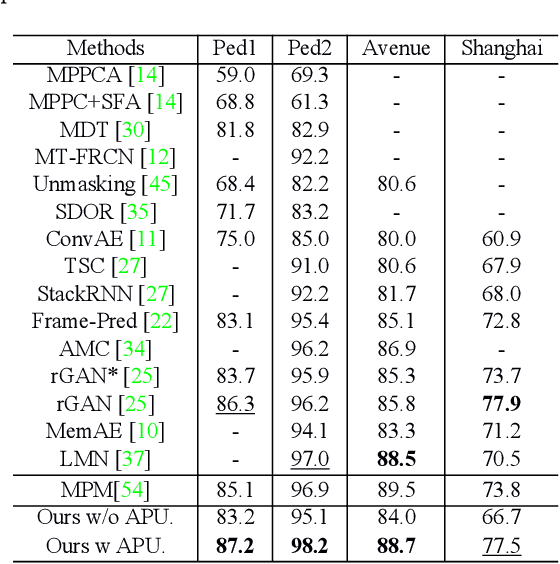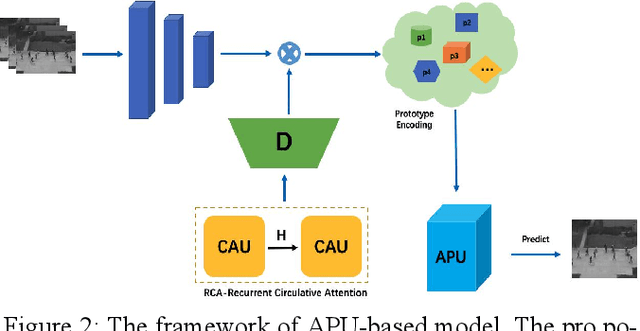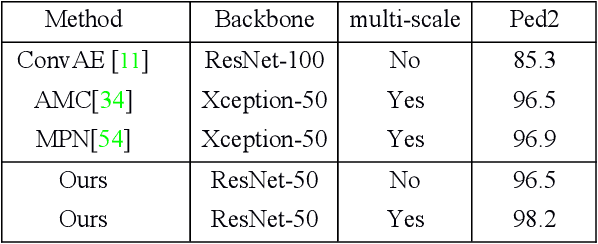Shengxin Lai
Multi-scale Feature Imitation for Unsupervised Anomaly Localization
Dec 13, 2022Abstract:The unsupervised anomaly localization task faces the challenge of missing anomaly sample training, detecting multiple types of anomalies, and dealing with the proportion of the area of multiple anomalies. A separate teacher-student feature imitation network structure and a multi-scale processing strategy combining an image and feature pyramid are proposed to solve these problems. A network module importance search method based on gradient descent optimization is proposed to simplify the network structure. The experimental results show that the proposed algorithm performs better than the feature modeling anomaly localization method on the real industrial product detection dataset in the same period. The multi-scale strategy can effectively improve the effect compared with the benchmark method.
* International Joint Conference on Neural Networks 2023
Normal Learning in Videos with Attention Prototype Network
Aug 25, 2021



Abstract:Frame reconstruction (current or future frame) based on Auto-Encoder (AE) is a popular method for video anomaly detection. With models trained on the normal data, the reconstruction errors of anomalous scenes are usually much larger than those of normal ones. Previous methods introduced the memory bank into AE, for encoding diverse normal patterns across the training videos. However, they are memory consuming and cannot cope with unseen new scenarios in the testing data. In this work, we propose a self-attention prototype unit (APU) to encode the normal latent space as prototypes in real time, free from extra memory cost. In addition, we introduce circulative attention mechanism to our backbone to form a novel feature extracting learner, namely Circulative Attention Unit (CAU). It enables the fast adaption capability on new scenes by only consuming a few iterations of update. Extensive experiments are conducted on various benchmarks. The superior performance over the state-of-the-art demonstrates the effectiveness of our method. Our code is available at https://github.com/huchao-AI/APN/.
 Add to Chrome
Add to Chrome Add to Firefox
Add to Firefox Add to Edge
Add to Edge